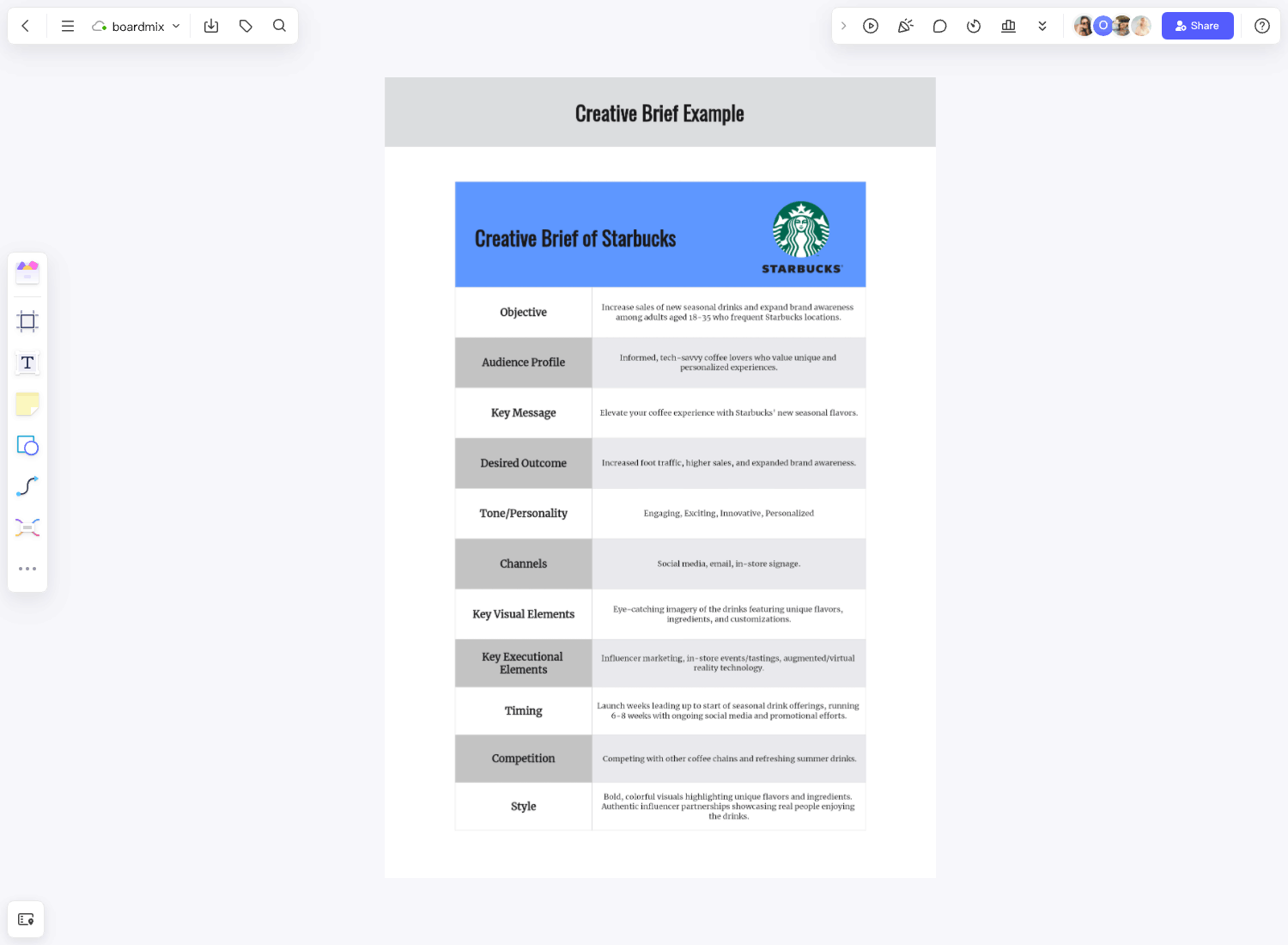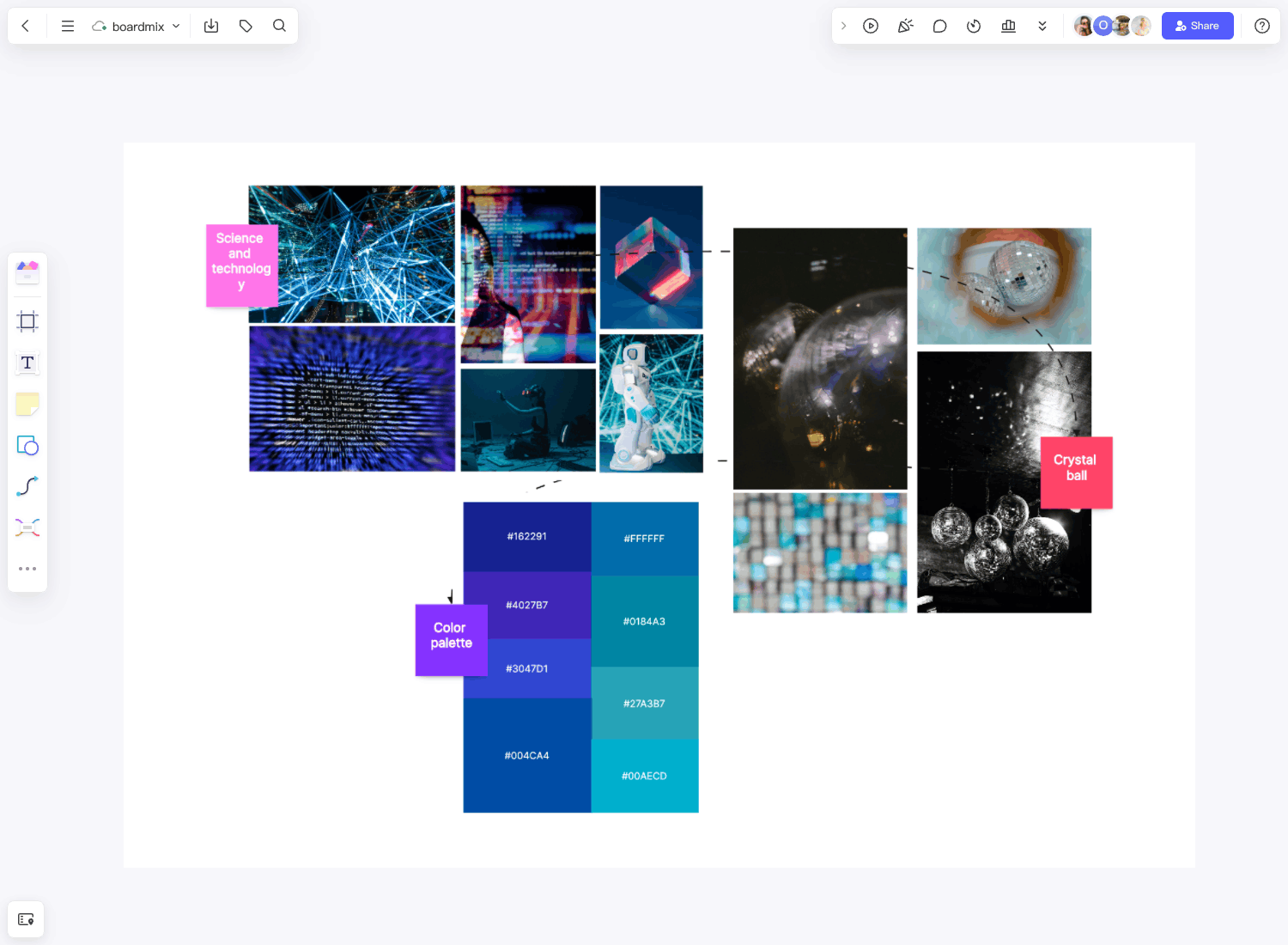Understanding someone's perspective is key in various contexts, including business relationships. With tools like a user story mapping template, companies can grasp users' needs, leading to an enhanced user experience and more effective solutions tailored to their requirements.
What is a user story map?
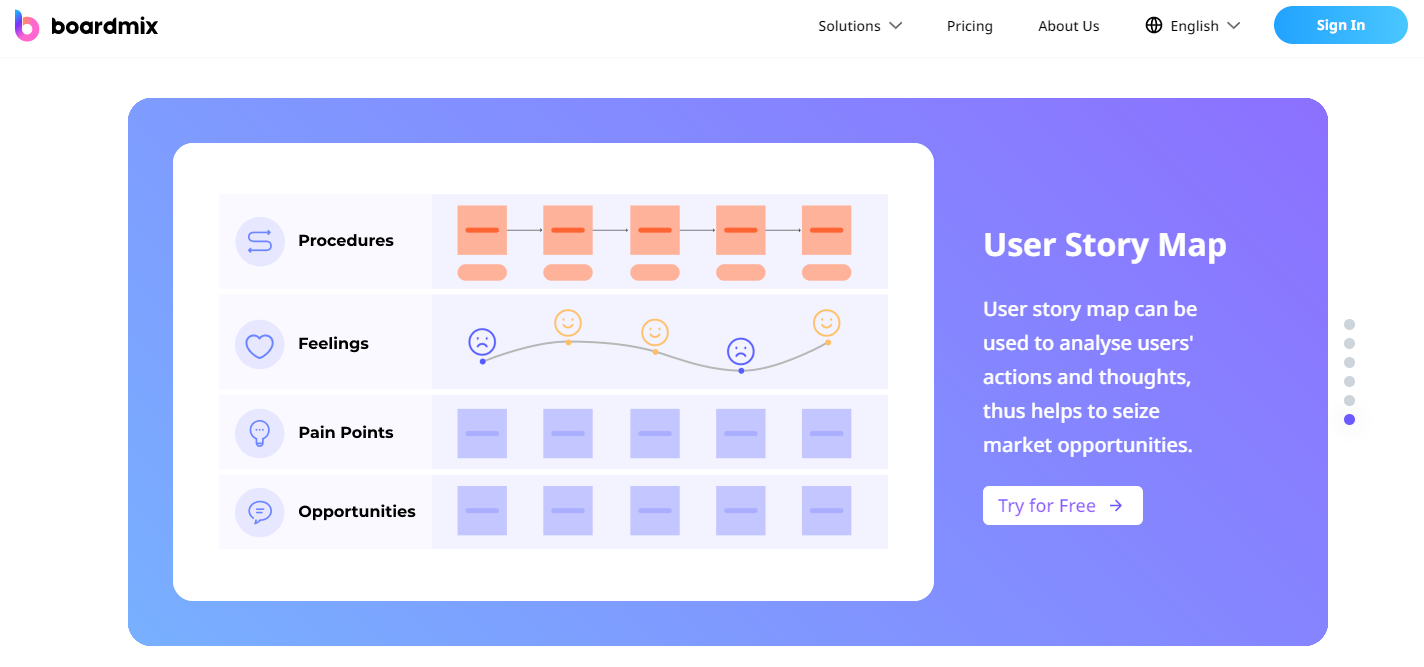
It is not hard to find a good user story template these days – we have an excellent one right here at Boardmix. But what is a user story map template anyway? Simply put, a user story map is a framework that consists of the users’ needs, experiences, and expectations – stories, if you will – that product development teams use to create products that would bring real value to their target market. It first became popular in 2005 soon after software expert Jeff Patton invented it to manage backlog better and set work priorities more efficiently. Today it is widely used in product development, but it is also utilized in a range of other applications.
Benefits of user story mapping
When used properly, the user story map template can give multiple benefits in designing and building products, which will greatly improve the process of product development. Specifically, the team will be able to do the following.
Create products that will truly satisfy users
A user story mapping template is a powerful tool that enables you to empathize with the user by understanding their needs, expectations, and motivations. By adopting this user perspective, you can create products and solutions that are better aligned with their requirements, ultimately leading to improved customer satisfaction and success in your endeavors.
Set better priorities for work
Looking at the user story template gives you a complete view of all the work involved in the completion of an order. You can easily see which tasks deliver more value and those that do not, hence enabling you to prioritize work accordingly.
Minimize risks
Although the user story mapping template does not always accurately predict how users will react to products, it will give you a reasonable visualization. With this, you will be able to pinpoint and prevent potential problems, thereby minimizing risks and other issues that can hinder smooth product deployment.
Collaborate and communicate more
Creating a user story map is something that is participated in by all members of the team. So even if each individual or group has their own designated tasks, the story map keeps them aware of the big picture and also encourages collaboration with the other team members so that the end goal would be sufficiently achieved.
When should a user story map be used?
User story mapping is beneficial in activities such as software development, creating a product backlog, or release planning. It is a very common scenario in businesses where the development team needs to come up with a product that delivers high user value at the least possible cost. This is a perfect situation to use a user story map.
A user story template is an invaluable tool for understanding the user experience and gathering insights for new product development. It allows your team to step into the shoes of users, identify their needs, and define the features that will cater to those needs effectively. Additionally, you can leverage this template to assess the potential improvements of an existing product, ensuring that any modifications align with user expectations and enhance overall satisfaction. By employing the user story template, your team can make informed decisions that lead to successful and customer-centric product development.
User Story Mapping Examples for Beginners
Next, we will give you three user story map examples from three vastly different industries. These will illustrate the versatility of the user story map and give you several ideas on how you can apply the same basic pattern to improve the mapping process for your business and ultimately enable you to deliver more value to your customers.
Online Shopping User Mapping
There are so many possible user stories to create for online shopping because of the extremely diverse clientele, as practically everyone shops online these days. For illustration purposes, let’s take on a very simple user story example: As a consumer, I want to compare products easily, so I can find the most reasonable price.
This user story can quickly turn into an elaborate story map because there are several tiny steps involved. The simple process of comparing products can be broken down into a lot of small user tasks – first go to the website, search for an item, filter the results by price, view the products, and finally compare the different items.

Chatroom APP
Another fairly common user story map example is what happens possibly millions of times a day around the world: As a social user, I want to find interesting people online, so I can meet new friends. This could apply to a dating app, a social media group for professionals within a common industry, or just an ordinary messenger app.
Again, there are dozens of scenarios that could play out and dozens of steps that the user can take until he achieves his goal. The user tasks would be clumped into groups, first for signing up, then for browsing for chatting partners, and finally making a selection. The browsing part alone can branch out into a lot of user stories – As a single man, I want to meet women in my city, so that we can meet up. Or as an avid jogger, I want to find like-minded athletes, so that I can join a team.

Karaoke APP
Online karaoke apps have become extremely popular in the last few years, and these are another situation for a great user story map example. As an aspiring singer, I want to perform my favorite songs, so that I can share my music online. The user scenarios include opening an account, picking songs, singing, and posting the songs online.
What the developer of the karaoke app would do is break these big user stories down to the smallest tasks. For example, for picking songs, top-priority tasks would include filtering songs by artist, genre, or keyword, then viewing info about the song, and also listening to other users who have already recorded the song. Lower-priority tasks might include sending gifts to other users or liking and sharing their records.

How to use the user story map template
The first thing you have to do when creating a user story map is to choose which template to use. The Boardmix template is very efficient and well-designed, as well as easy to use.
State the problem
Once the team has settled on a template or medium, you can start by framing the problem from the user's perspective. The best way to do this is to follow the standard format for a user story – As a [user [persona], I want to [do an action] so that I can [achieve a goal].
Understanding the users
It's crucial to recognize that your product may have multiple target markets. For each user type, it is essential to gain a comprehensive understanding of their objectives and interactions with the product. This approach will enable you to refine your product and deliver maximum value to all users. By catering to the specific needs of each target market, you can ensure the success and satisfaction of a diverse range of users.
Map user tasks
These are all the activities that users do for the product. For any online item for sale, for instance, the first task for a potential customer would be searching for a product, followed by viewing the items, then adding selected ones into a cart, and so on.
Map user stories
With the user tasks you've mapped, the next step is to create a user story map. For each task, break it down into individual stories by going through them one by one. This approach will help in detailing the specific needs and requirements of users, allowing for a comprehensive understanding of the project scope.
Prioritize user stories
If there is more than one user story that corresponds to a user task, you now need to prioritize these tasks, with the most important ones at the top.
Create sprints and product releases
Take at the user story map you have so far and identify the stories that will bring the biggest value in the least amount of time. Group them into sprints and releases.
How to Make a User Story Map with Boardmix
Boardmix is an online collaborative whiteboard that allows you to create your user story map in no time. The tool possesses a drag-and-drop editor that has a smooth learning curve.

Furthermore, all of your team members can also collaborate on the user story diagram to ensure that you have included all the required tasks. Here are the steps to craft this diagram using Boardmix:
Step 1 – Create the Project’s Activities

First of all, you need to decide which are your project’s main activities. Once you have determined the activities, you can create the shapes and place them at the top of the whiteboard.
Step 2 – Find and Create the User Tasks

The next step to create a user story diagram is to create the user tasks. These are subtasks that you must place on the second level. To make the levels easy to tell apart, you can select shapes of different colors.
Step 3 – Create User Stories
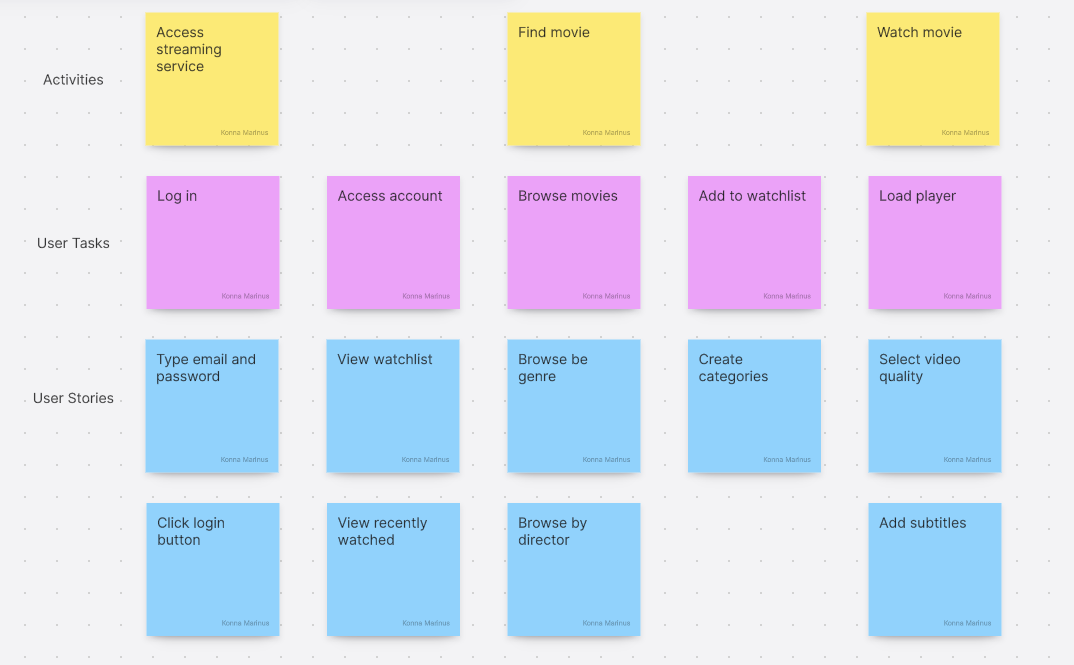
The following step is to add all relevant user stories. You will find the third level of your diagram contains the most tasks. Create all of them and select a different color for the shapes.
Step 4 – Manage User Stories
Before finalizing your diagram, you can evaluate the importance of each user story. Move the elements around to indicate their priority.
Step 5 – Share Your User Story Diagram
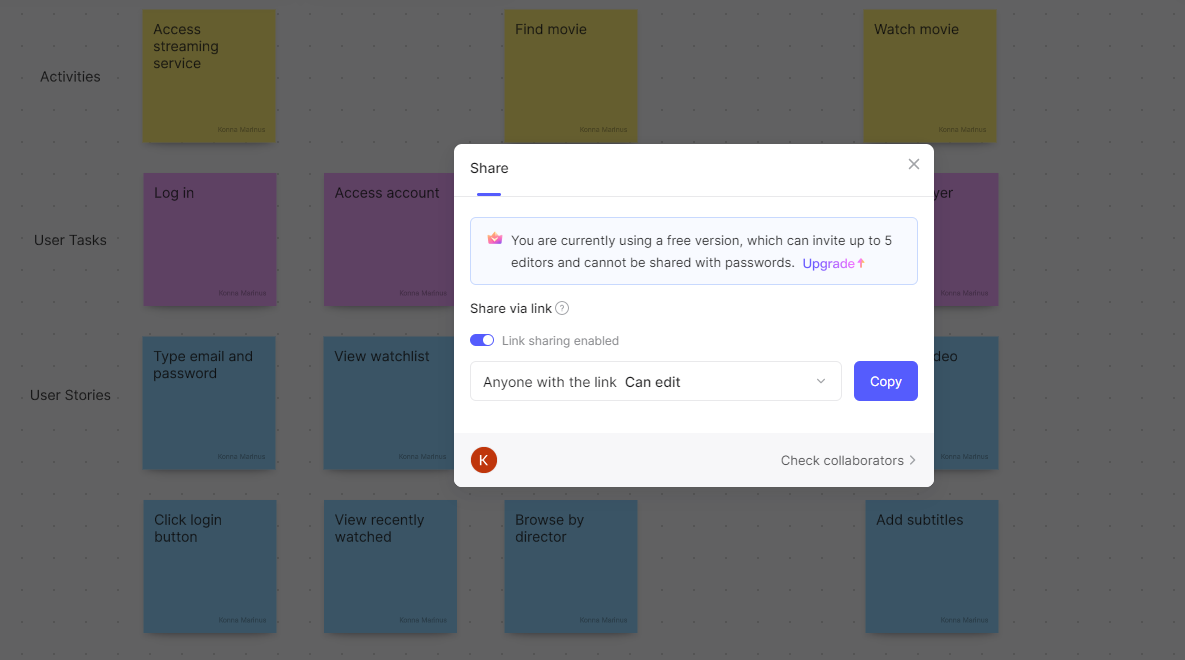
Finally, share the diagram with everyone involved. If there are changes that you need to implement, you can simply edit it.
FAQs about user story maps
How do you use user story maps in Agile?
Agile is a type of approach to project management that focuses on collaboration among the different areas of a business to achieve overall success. User story maps are vital Agile tools for better grooming the product backlog and for efficient planning of product releases.
What is the difference between user story mapping and process mapping?
User story mapping provides a visual representation of the user’s experience with a particular product, from their perspective. Process mapping, on the other hand, shows the flow of all processes throughout a business, from the perspective of the business.




